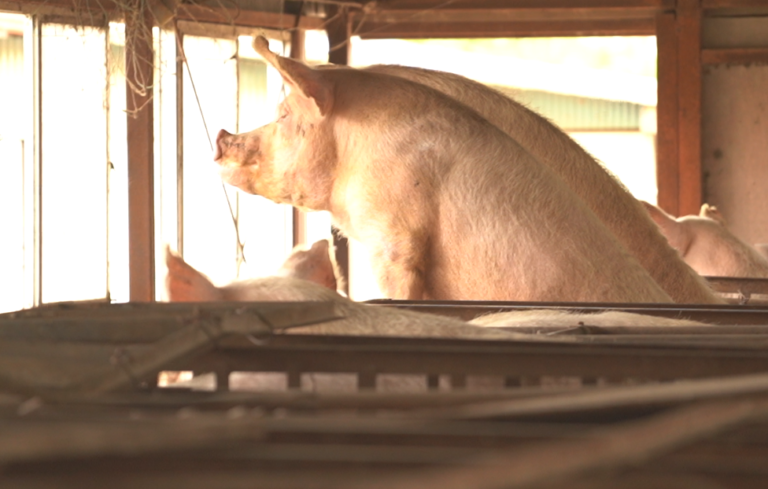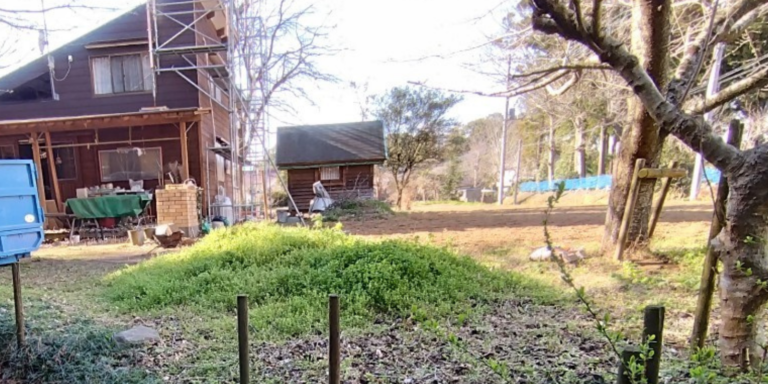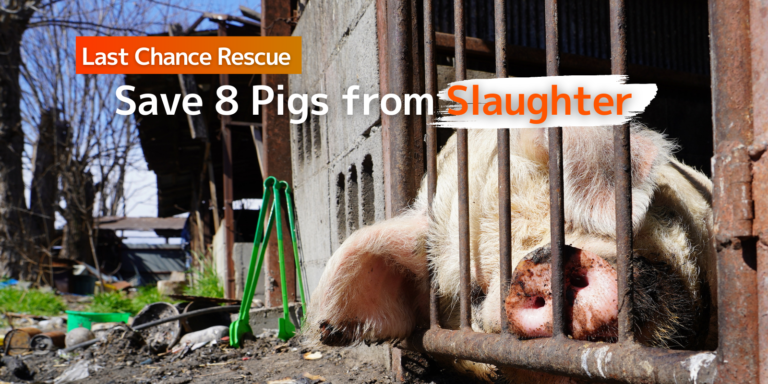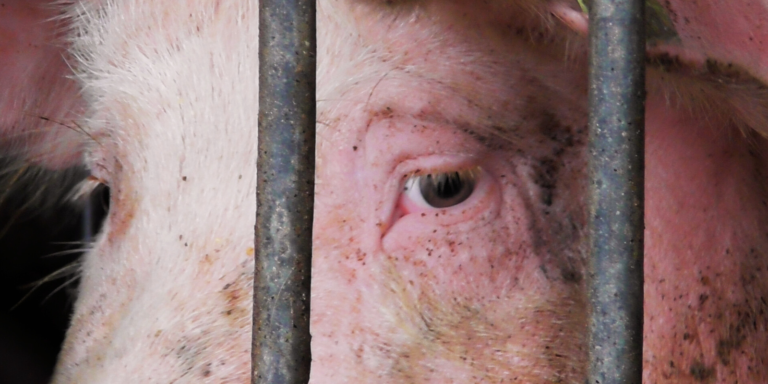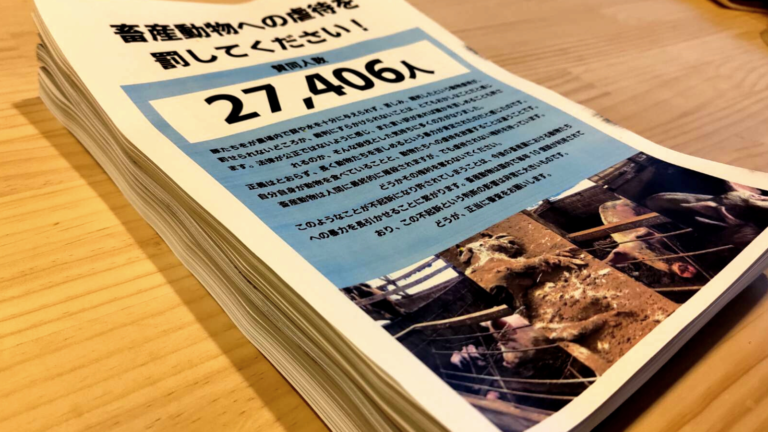On May 19th and 20th, we went to a pig farm that was closing down to rescue eight pigs who had been left behind and were scheduled for slaughter. We planned to picked up two pigs for long-distance transport on the night of the 19th and transport the remaining six pigs from early morning on the 20th to finish before it get hot.
The destination for these pigs is split between three locations: two pigs will go to the “Ehime Sanctuary (tentative name),” four pigs will go to the “Future Cottage for Animals,” and the remaining two pigs will go to the “Future Home for Animals.” These three locations together are named “Animal Rights Village.”
We first met these pigs in March and quickly started preparations, including purchasing new land, building sheds and sturdy double fences, and overcoming various obstacles as a team. We will share more about this journey in a future report.
Transporting these pigs was also a significant challenge. It’s not something amateurs can easily do, especially with large pigs weighing around 250kg each.
The long-distance transport from Yamanashi to Ehime added even more pressure. Transport is one of the most stressful experiences for animals. The thought that they might die during transport crossed our minds repeatedly. We were quite in turmoil until we made the decision to take them to Ehime, as there were no other options. However, once they arrived safely, the most reassuring place was prepared for them. The transport vehicle, which was modified by the Ehime Sanctuary (tentative name) to accommodate two pigs, added large windows and a ventilation fan to the 2-ton truck. We carefully placed a thick layer of fluffy sawdust and transported them slowly and gently.
Transport to Chiba was handled by a specialized livestock transport company. They took our efforts seriously and were mindful of the temperature and density during transport.
Despite the hustle and bustle, we did everything we could to prepare for the 19th.
As it grew dark around 7 p.m. on the 19th, one pig was already waiting in a cage to be loaded onto the truck. Once we managed to load one pig onto the truck, it immediately lay down comfortably in the fluffy sawdust, looking relaxed and even tried eating the sawdust. When it was time to load the second pig, it resisted fiercely, refusing to leave the concrete, feces-stained, lifeless environment of the farm. No matter how awful the conditions, for these pigs, it was still home, and they would resist being taken away, thinking they might be killed. Unfortunately, this pig had been weakened during the loading process and passed away shortly after arriving at the sanctuary.
Early morning on the 20th.
First, we tried to load the two pigs which go to the “Future Home for Animals.” Despite their initial resistance, one of them suddenly began walking and entered the cage by themselves when our eyes met. Both pigs seemed to gain some peace of mind when our eyes met. They might have given up or understood something. The male pig even ate a banana, comforting us.
It took several hours to get the female pig, who lived alone, to the “Future Cottage for Animals.” She resisted entering the cage, pushing people away and running around outside the farm’s aisles. It would have been easy for her to escape beyond the premises, but strangely, she didn’t try to escape that far. Even with five men trying to get her into the cage, they couldn’t do it by force.
Two of the three pigs were relatively easy to load onto the truck. When our eyes met, they showed signs of relaxing, as if they were unsure about resisting further. However, the third pig, whom we had been worried about since meeting her in March, was already in a weakened state. We had to decide whether to take her with us or leave her behind. We chose to take her with us, thinking that staying here would only lead to her dying alone on concrete, while at the sanctuary, a veterinarian could examine her. However, this decision turned out to be wrong, as she passed away during transport.
While we tried to save eight pigs, we also lost two precious lives. We deeply regret causing distress to these two pigs and to the remaining six pigs who lost their companions. The toll is too great, and we must carry this burden in our hearts. Along with our staff, we pledge to use this painful experience to reduce the suffering of the next group of animals. Once again, we emphasize that transport is the most stressful aspect for animals, and it’s unacceptable that there are no regulations regarding this. Businesses based on moving animals, such as circuses or mobile vendors, are also unacceptable. It’s unacceptable to transport animals long distances to slaughter houses in Shinagawa, Tokyo just because they can be sold for a high price.
The black pig who became the only one in Ehime was given the name “Kogechacha-maru.” Because he was a black pig, they added “kogecha” to his name, and they combined it with “Chacha-maru,” which was originally intended for a brown pig, to express the desire to “always be together.” The staff at the Ehime Sanctuary gave him this name. Kogechacha-maru never wanted to leave Chacha-maru’s side and slept outside that day. The staff at the Ehime Sanctuary even slept outdoors with Kogechacha-maru, keeping him company. At night, Kogechacha-maru sobbed, crying like a human.
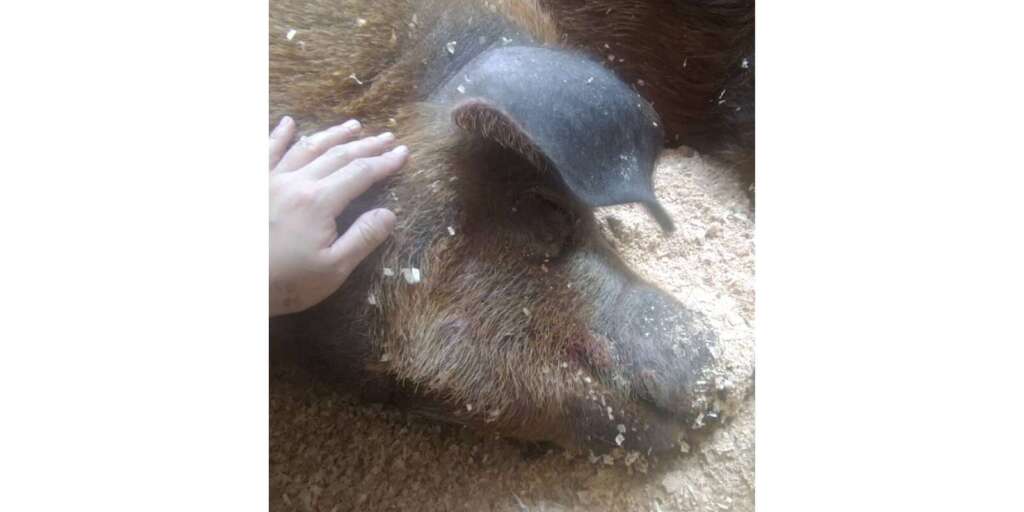
The name of the weakened pig who passed away is Saki. It’s the name that stood out the most among all the names suggested and submitted by everyone. When we first met Saki at the pig farm, we felt, “If this sickly child who can’t walk properly could be given to us, maybe we could negotiate,” which became the starting point of this rescue project. In the beginning of March, negotiations started with the hope of receiving just Saki.
Saki is the one who rescued everyone from the fate of slaughter.
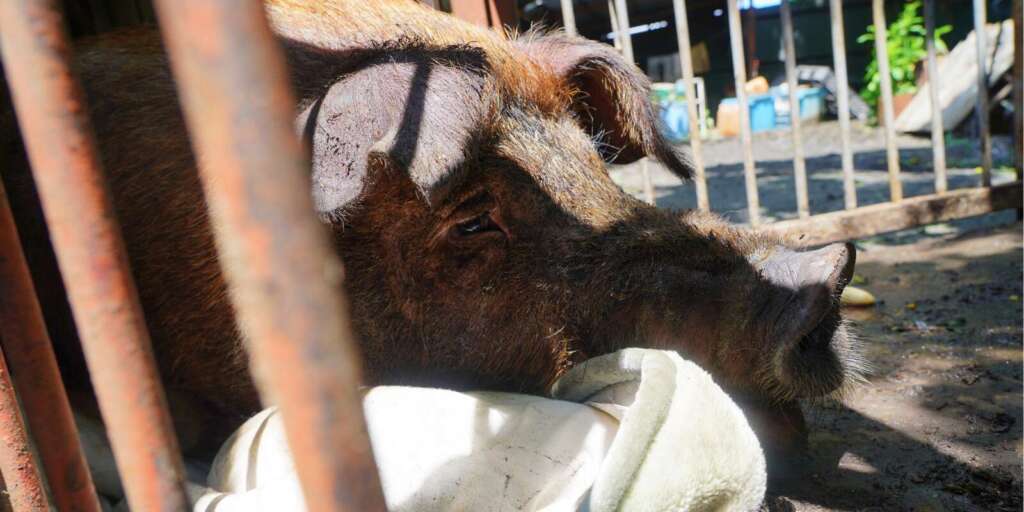
At the sanctuary, we used our knowledge to prepare a flower path so that the pigs could easily descend from the truck. Thanks to this, the pigs were able to walk relatively smoothly and step down from the truck to each sanctuary on their own feet.
The remaining six pigs are gradually getting used to their new environment, with fluffy beds, wide skies, soft soil, and touching the grass and trees of nature for the first time, although they are still not completely at ease.
We will report back with more updates.
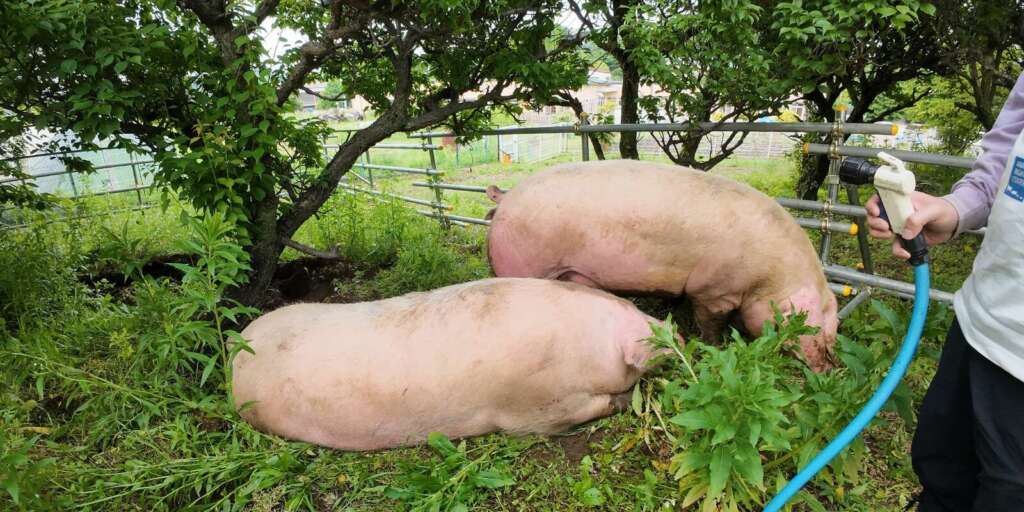
We will do our utmost to protect the six rescued pigs and to honor the deaths of the two pigs, as well as to protect the 1billion farmanimals.
Please continue to watch over us.




